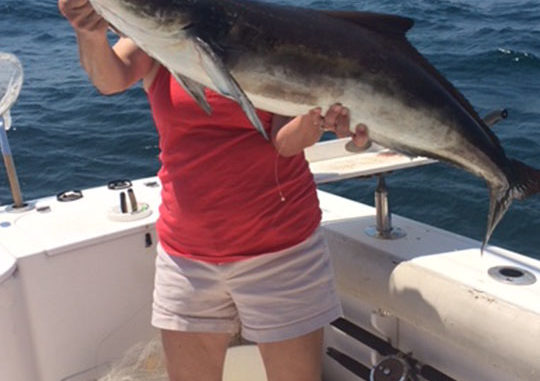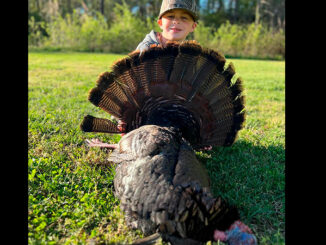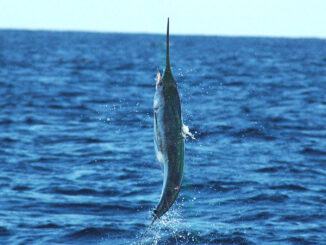
Nothing says summer is coming like pitching a live menhaden to a 50-pound cobia 20 feet from the boat.
What happens next? All hell breaks loose. It’s all hands on deck to get the rods and gear out of the way to put the angry, prehistoric-looking monster in the boat.
Sight-fishing for cobia in the nearshore ocean is one of the most-exhilarating things an angler can do, especially in the waters along the border between the two Carolinas, and especially from late May into June.
Tom Cushman of Captain Cush’s Calmwater Charters always makes a run at cobia late in spring; June can be prime time.
“Our (menhaden) start showing up just off the beach this time of year,” said Cushman (843-997-5850). “Cobia are migrating up the coast, and we will catch them in and around the pods of bait.”
Menhaden are also moving northward, and everything from sharks, king mackerel and cobia will be trailing these bait trains, looking to pick up an easy meal. While kings and sharks will be somewhat spooky, cobia are fearless and will swim just under the surface in and around the pods of bait.
“They will swim right up to the boat, and you have got to be ready with a pitch bait when they show up,” he said.
Cushman will pitch free-lined live baits or an artificial lure to the surfacing cobia when he sees one, or he will nose-hook a live menhaden on a Carolina rig, toss it near the school of bait and wait for the rod to double over.
Not every school of bait will have a cobia around it, but schools of bait will be all over the beachfront. Cushman will cruise up and down the beach from pod to pod, checking for a willing contender.
When cobia are not cooperating, Cushman will slide out to nearshore reefs and deploy a set of weighted lines and free-swimming lines in these areas.
“The reefs in water from 35 to 100 feet will hold big schools of bait, and cobia will hang around the reefs for a while before they head further north. The reef bite can be real consistent when the fish are abundant in the area,” he said.
Even though cobia are moving north for the summer, it’s not uncommon for some of the small schools of cobia to stay around the reefs for the better part of the summer.





Be the first to comment